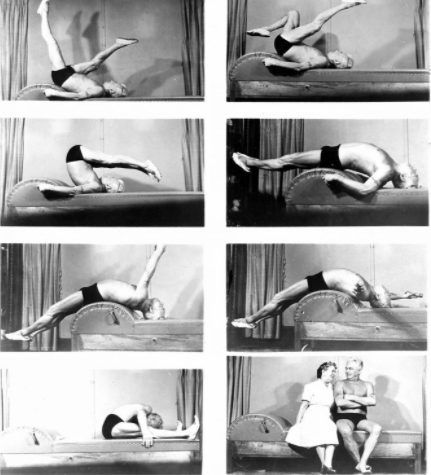This is a post I wrote for The Core, the blog from Balanced Body. I’m re-sharing it for Tarrylife.
Pilates is good for the body. We can all agree on that. Contemporary Pilates? Classical Pilates? It’s all good. But what’s the difference? Simply put, Contemporary Pilates is based on Joseph Pilates’ work and Classical Pilates means teaching the same exercises, in the same order, on as-similar-as-possible equipment that Joseph Pilates did. He created his method a hundred years ago and it’s still perfect today.
his method a hundred years ago and it’s still perfect today.
There’s more to it than just following the order. It’s the rhythm. It’s the flow. It’s the simplicity that makes classical different. I didn’t say easy. No way! It’s hard. Have you seen the archival footage of Joseph Pilates teaching? He was moving!
My teacher, Romana Kryzanowska, who worked alongside Joseph Pilates for many years, said “Pilates was a genius of the body.” He drew from different disciplines like yoga, acrobatics and martial arts to make his own method. His exercises were ultimately to be done on the mat but since the mat work is so darn hard, he invented different apparatus to help the body get stronger using springs and straps. The Universal Reformer, Cadillac, Barrels and Chairs were born.
In Classical Pilates, teachers don’t have to reinvent the wheel with every session. There’s a set order, a systematic way to work through the whole body so we can focus on the body in front of us and not what exercise comes next.
On the Reformer, you begin with footwork to warm up the legs and feet. Then you move on to the Hundred, pumping the arms to get your heart rate up. Next, you put straps on your feet and either do Leg Circles or take the legs overhead in Short Spine Massage to stretch the back and legs, right into Coordination, building heat as you go.
The transitions become part of the exercise and your energy and flow increase. It feels amazing! Pilates wanted his workout to be one continuous dance, going from one movement to the next for ‘an hour then you hit the shower’ and the simple design of the classical Reformer aids in that.
There aren’t many choices in settings. The straps have handles or a loop for feet – that’s it. There are four uniform springs, one foot bar setting – done. The design makes it easy to drop or add springs, take the head rest and foot bar up or down with one hand so you can keep moving.
Pilates famous quote in his book, Return To Life, “Physical fitness is the first requisite of happiness,” meant he thought people should be really fit!
Of course Pilates can be used for rehabilitation and therapeutic purposes, but he intended his method to be a workout. He wanted people to attain a uniformly developed, strong and healthy body with his exercises performed “exactly according to instructions – and not otherwise.”
I take this to heart and strive to pass on what Joseph Pilates laid out a hundred years ago. There’s magic in his order, his energy and rhythm and that’s what keeps people loving the classical method today. It’s perfect!

